This year's world championships started on April 16 and will conclude on May 2nd. The Game columnist Andy Murray looks back at the sport’s 1980s heyday when 18.5million people stayed up to watch the 1985 black-ball final.
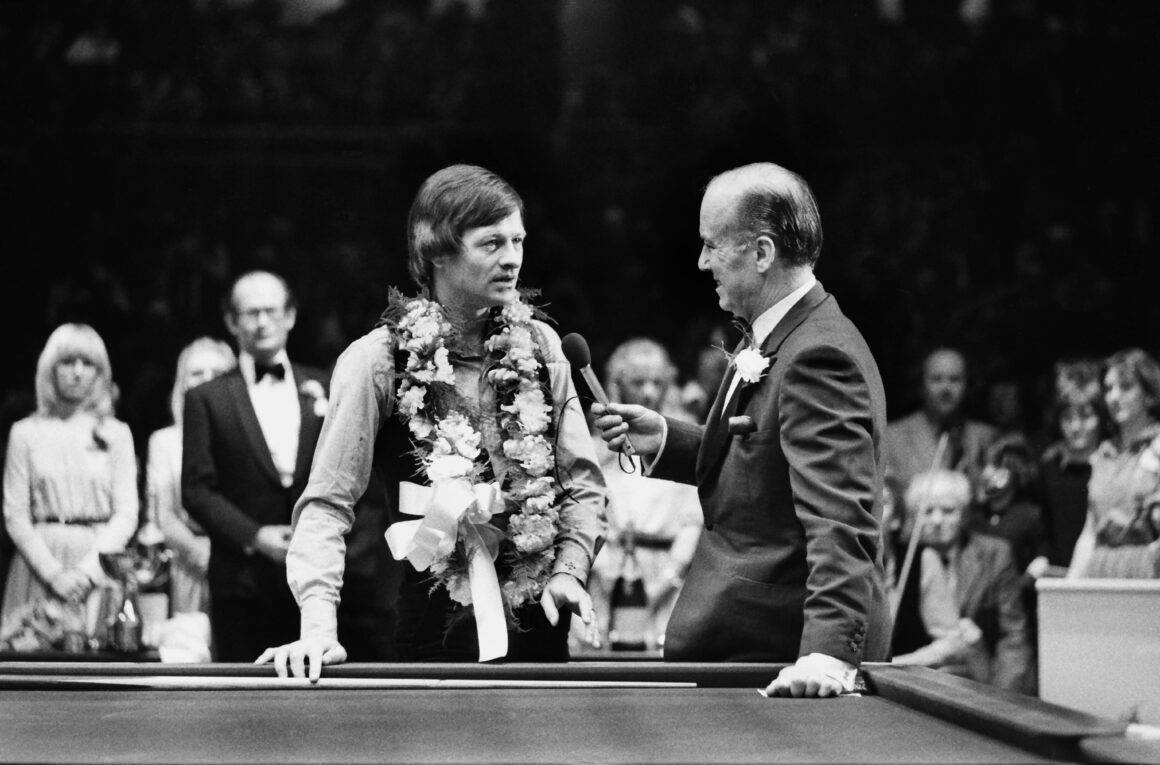
Drugs, drinking Chanel No5 and an axe-wielding Oliver Reed – how snooker tore up the rulebook to dominate sport and the music charts in the 1980s.
The clock ticked past 12.21am in the early hours of Monday April 29, 1985, and Dennis Taylor was one pot away from destiny. After 14 hours and 48 minutes and 34 frames of impossible tension the 1985 World Snooker Championship final had come down not only to the final frame, but the final black. Taylor had gone 8-0 down to the odds-on favourite and three-time world champion Steve Davis and at no point in the ensuing two-and-a-bit days earlier, had Taylor been ahead. Now, 66 minutes into the deciding frame, he just had to pot this final black and he’d win his first world title.
A short, portly man from Coalisland, Northern Ireland, Taylor was short-sighted in one eye and long-sighted in the other, the upside-down glasses he wore were no comedy affectation but a functional necessity so he could see what balls he was hitting. Hardly an athlete in the traditional sporting sense. Taylor settled on the shot and sent the black towards the top pocket, twitching as he did so. “The biggest shot of his life,” said a hushed Jim Meadowcroft on BBC Two commentary. It missed badly, the crowd at Sheffield’s Crucible Theatre howled their displeasure at being denied their underdog moment.


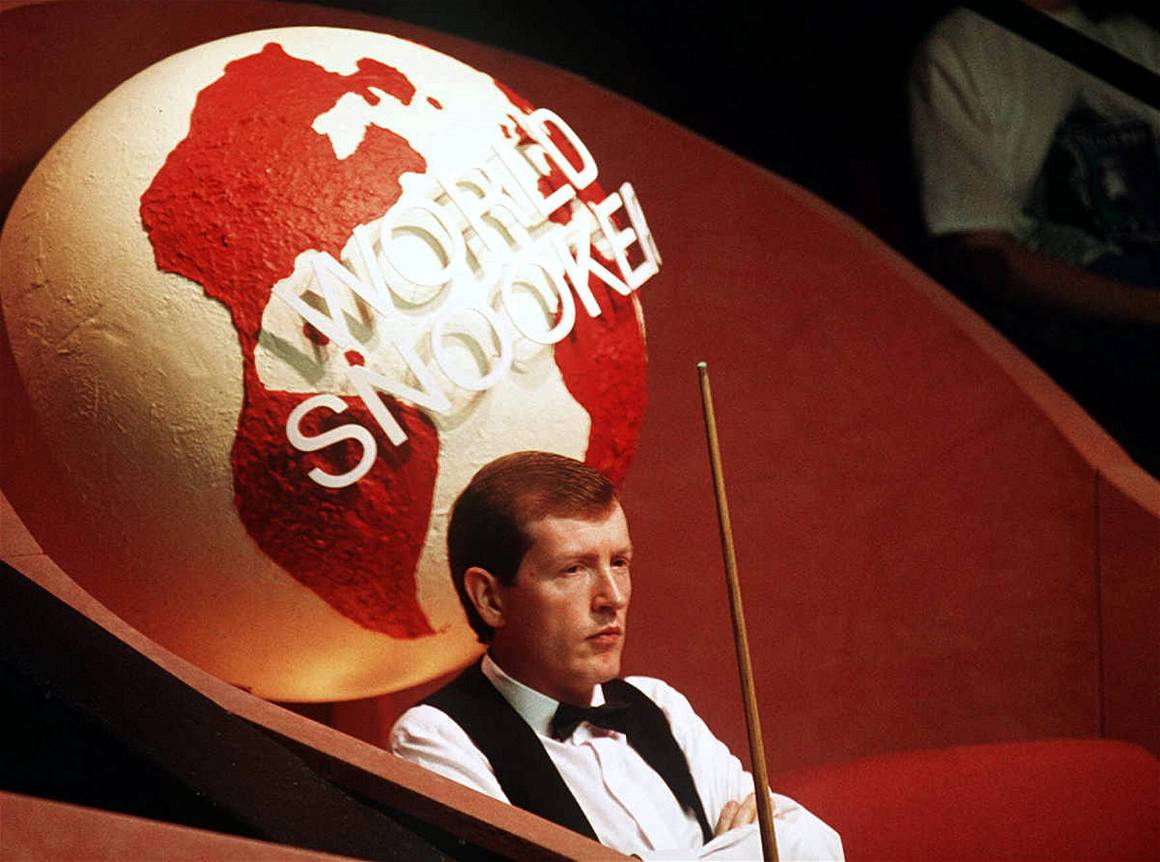
Dull, dogmatic and determined, Davis had a simple cut to win his fourth world crown in five years. Stick-thin with a mop of ginger hair, his pallid complexion – not helped by his Vitamin D-avoiding pastime spent in darkened, windowless halls – was such that if you squinted, you could nearly see his organs jiggling around inside him. “Don’t hit it thick,” Davis told himself, “that’s how you bottle it.”
Impossibly, Davis hit the black too thin and missed, leaving Taylor a stay of execution. “This is really unbelievable,” said ‘Whispering’ Ted Lowe on commentary, having just purred a velvety “Nooo-ohhhh” at Davis’ miscue.
This time, two minutes after his first chance, Taylor wouldn’t be denied. Barely able to stand, he sank the crucial black, held his cue aloft as if performing a couple of pull-ups and wagged his finger at a friend in the crowd. Some 18.5million people stayed up into the small hours to watch on BBC Two – it’s still the most-watched programme in the channel’s history.
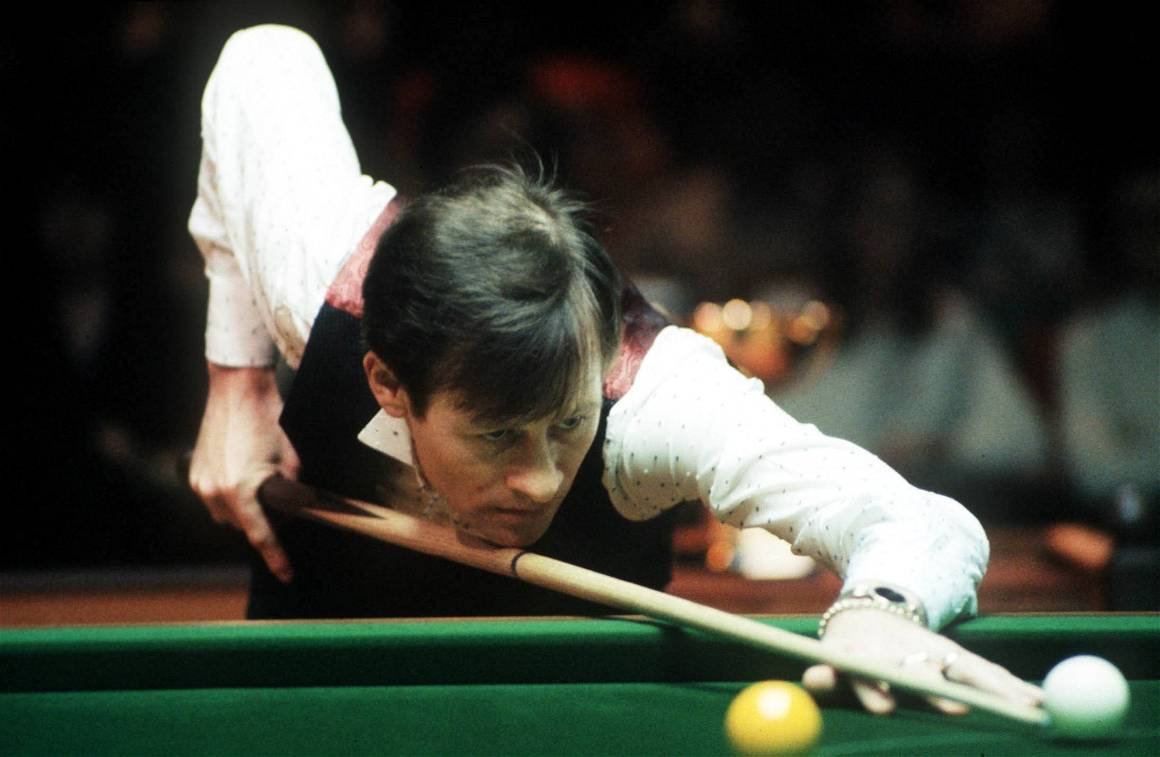
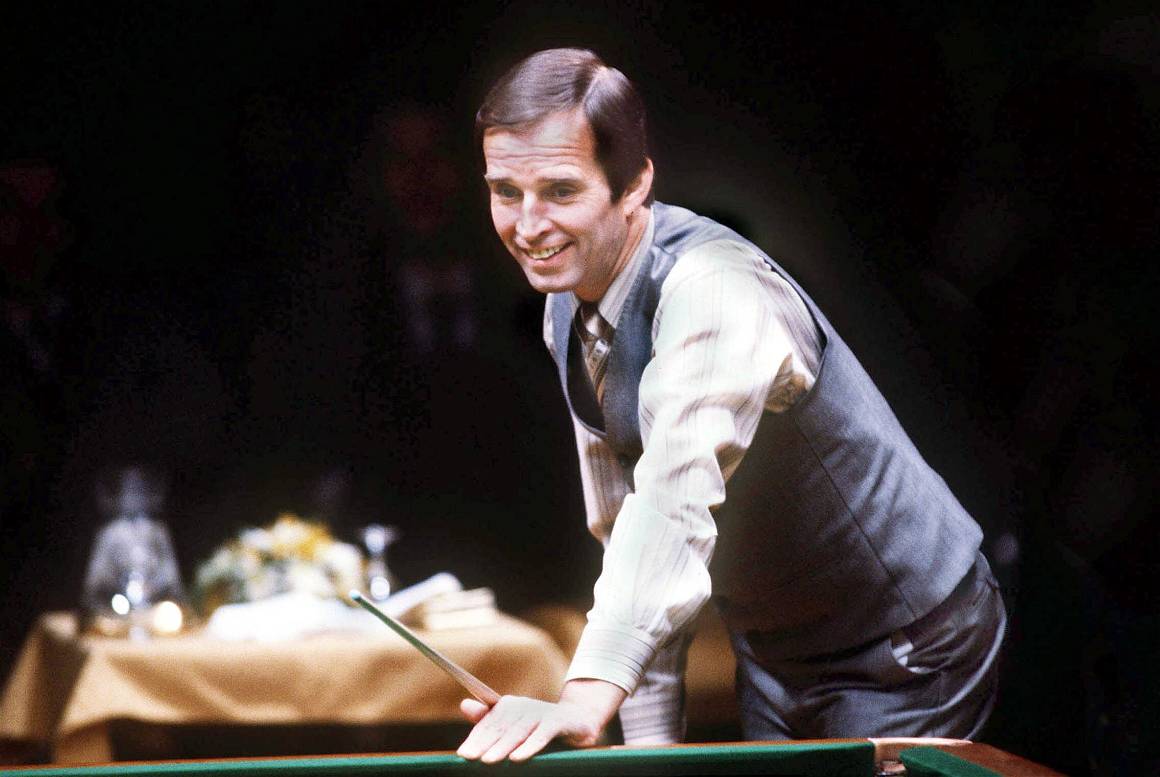
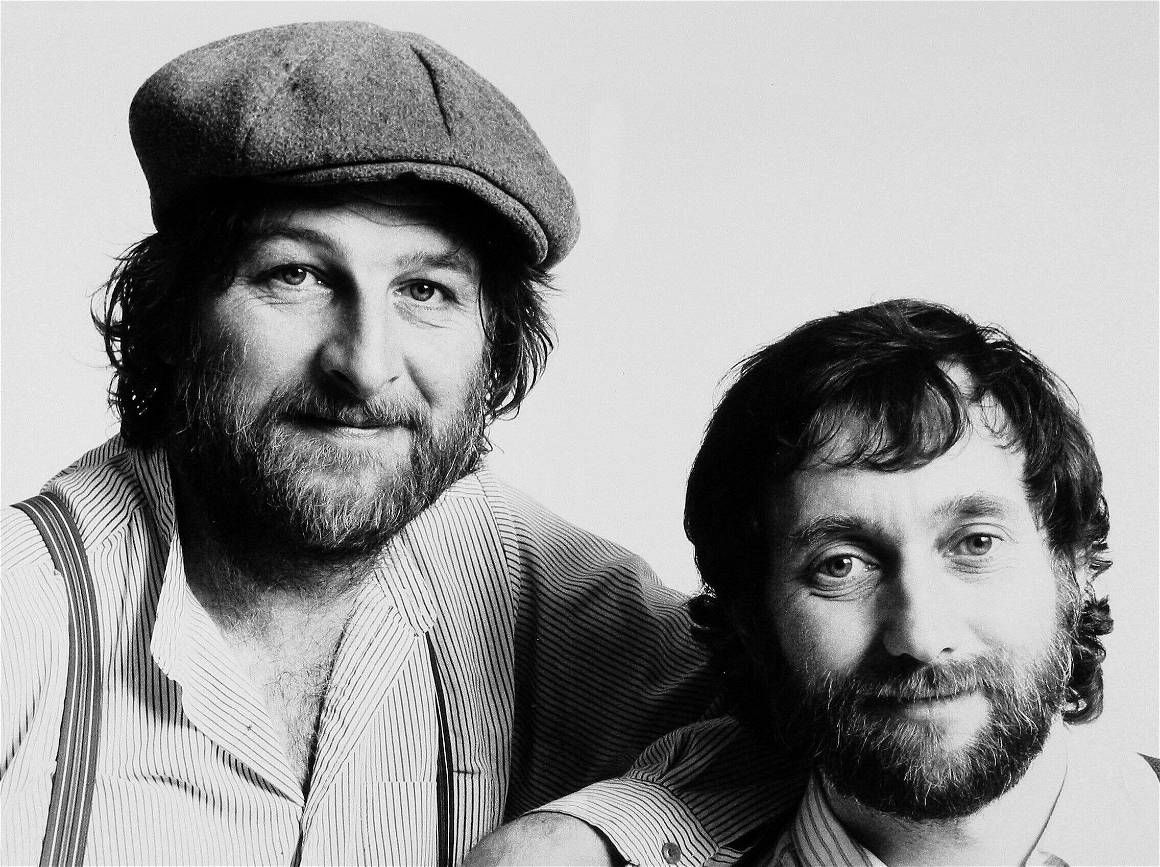
Snooker in the 1980s was box-office in the UK. The game was full of characters, something the sport’s never knowingly undersold empresario Barry Hearn exploited as part of his Matchroom stable of players. A year after what became known as the black-ball final, Hearn commissioned Cockney bar-room singalong pop-rock duo Chas & Dave – who had written two FA Cup final songs for Tottenham in the early ‘80s – to come up with a song to promote the sport’s top players. Snooker Loopy is a contender for the best sports song ever recorded – it’s certainly the most catchy. The chorus, “Pot the red and screw back for the yellow, green, brown, blue, pink and black,” served not only as an earworm, but also a handy reminder to those new to the game of the order in which the ball are potted.
Six of Hearn’s players – Davis, Taylor, Terry Griffiths, Willie Thorne, Tony Meo and Neal Foulds – each had their own verse which played on their idiosyncrasies. “Steve last year came very near to winning the snooker crown,” went beaten 1985 finalist Davis’ section, “but he never got to put it on his ginger nut, ‘cos the black ball wouldn’t go down.’”
Follicly challenged Thorne’s verse, however, is the high watermark. “But old Willie Thorne, his hair’s all gone,” it began, the last word pronounced in a Cockney-accented ‘gawn’ to ensure the rhyme, before continuing, “It’s just not fair giving off that glare.” Thorne, himself, delivered the punchline: “Perhaps I ought to chalk it.”
It charted at 98 as the 1986 World Championships started, eventually peaking at No6 in late May – also in the Top 10 that week were Madonna, Van Halen and Level 42 – the players even appearing on legendary music show Top of the Pops in the process.
Snooker could only be an English invention. Played exclusively indoors away from the grey drizzle – usually in smoky pub backrooms or dedicated snooker halls where illegal betting was once rife – it’s a slow-build sport that resembles cricket for its delayed gratification and economy of actual movement. It’s also the perfect sport to work, revise or waste time to. Back in my university days while revising for my finals, the snooker was my permanent soulmate, albeit how much it actually helped me recall the political upheaval of the Spanish Second Republic in the 1930s is open for debate.
Yet anyone who has attempted to play on a full-size snooker table will know how difficult it is to play. The pinnacle of the sport is a 147 break – 15 reds, 15 blacks, followed by the six colours in order – yet even perfection only accounts for one frame in a match, much like a nine-dart finish or a 300-game in ten-pin bowling. Since 1926, the year of the first world title, there have only been 175 maximum – Davis recorded the first at the Lada Classic in 1982.


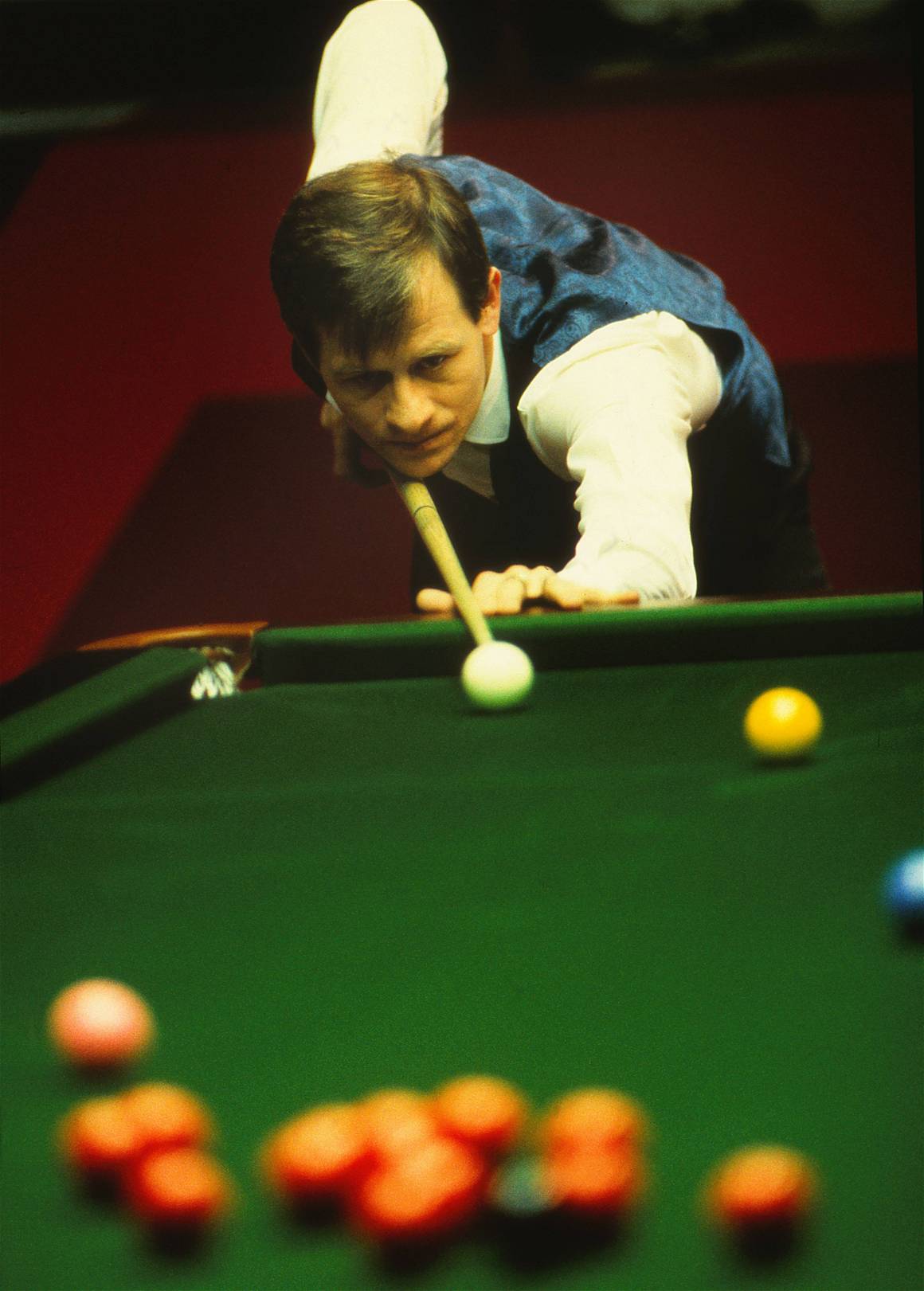
Its rise to UK sporting dominance began in 1969. David Attenborough – the naturalist whose award-winning documentaries captivate millions – was then the controller of BBC Two and desperate to find a show to take advantage of the channel’s newly launched colour technology. Snooker proved the perfect vehicle and Attenborough commissioned a new series called Pot Black, which featured many of the world’s best players duking it out over a single frame. The show’s popularity eventually brought the World Championships to the channel from 1978, staged at the Crucible in Sheffield from the following year.
Davis and Taylor’s 1985 final may have provided the sport’s zenith, but they would never have reached that 18.5million audience without standing on the shoulders of a giant. A Belfast-born maverick who played the game with a verve few have ever matched, Alex Higgins electrified a sport that needed a jolt. The 1972 world champion’s preternatural talent was allied with a self-destructive personality which could combust at any moment. In winning that first world title – in a best of 73 frame match at the British Legion club in Birmingham, played over the course of a week in front of a handful of spectators – Higgins became the posterboy for a new kind of snooker. He was brash, sped around the table and played an attacking game fully befitting his nickname the Hurricane. He refused to wear the mandatory black, right up until snooker tried to modernise and banned the colour, so he returned to a waiter-style black-tie getup. With a fedora, obviously.
The game’s most recognisable face, Higgins’ myriad vices included alcohol, cocaine, women and even downing half a pint of Chanel No5. He once threw his cue “spear-like” at a spectator at an exhibition in Ilfracombe and spent many a drinking session with notorious soak Oliver Reed, once being chased around the Three Musketeers star’s 35-bed mansion while the Hollywood actor wielded an axe.
For two glorious weeks in 1982, Higgins managed to stay clean. Carrying 18-month-old daughter Lauren’s dummy in his pocket as a good-luck charm, he kept his promise of winning a second world title – a 69 break in the semi-final against Jimmy White is probably the greatest clearance in the sport’s history, such was its difficulty. After defeating six-time champion Ray Reardon in the final, he called down wife Lynn and baby Lauren tableside and burst into tears.
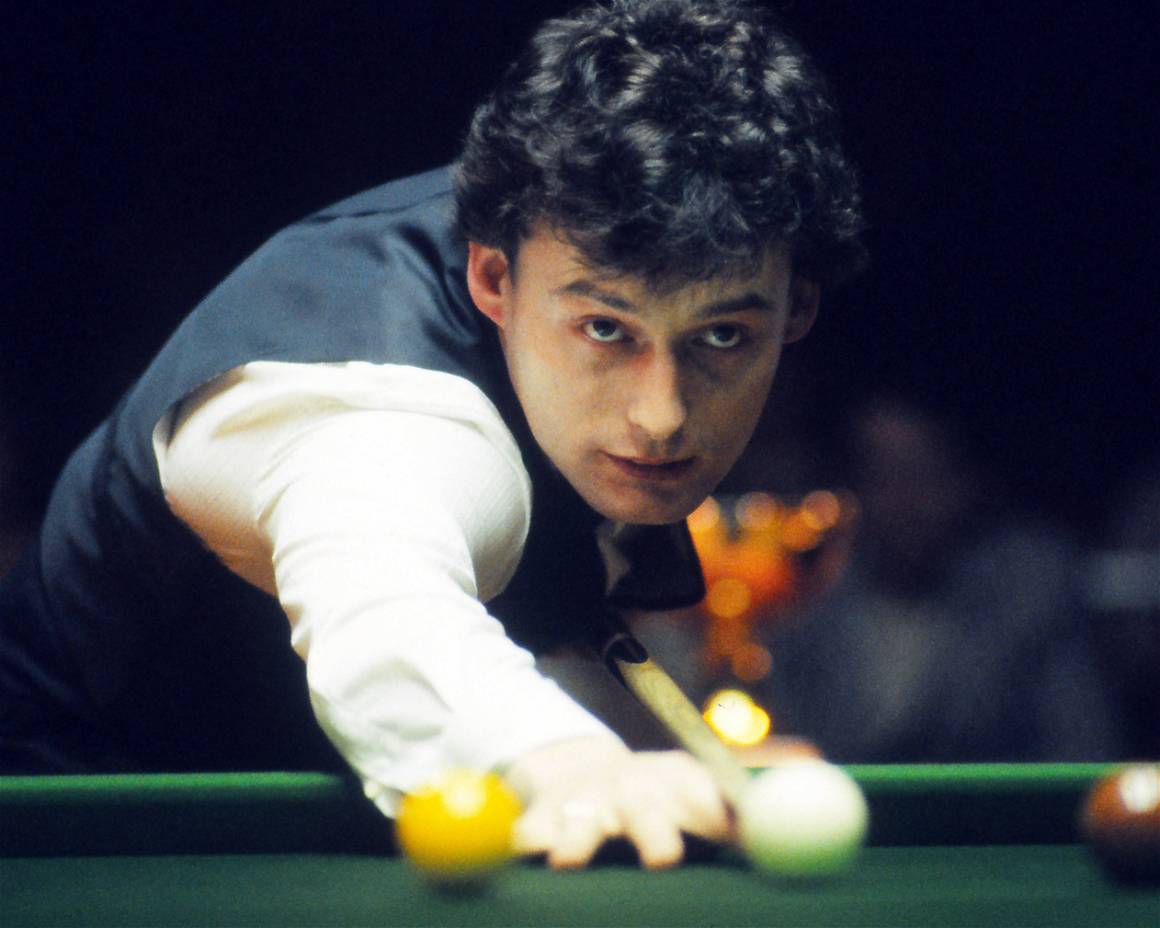

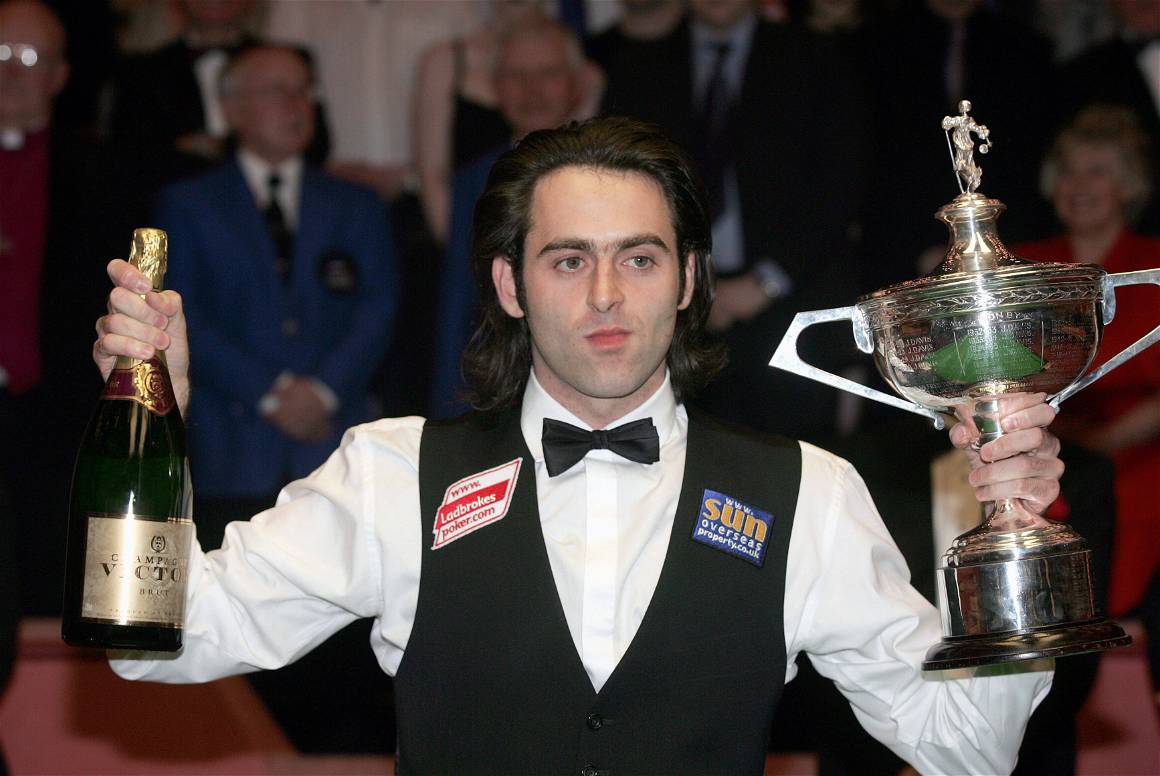
That victory, however, sparked the return of Higgins the hellraiser. He drank with members of the Who, Elton John, Ian Botham and George Best, his family eventually leaving him to it. He retired in 1990 after punching an official after losing in the first round of the World Championships. Yet anyone who has since picked up a cue – including Stephen Hendry, the seven-time winner who dominated the 1990s – owes at least something to Higgins’ infectious magnetism. Tony Knowles and white-suit-wearing Kirk Stevens made headlines as much for their off-table conquests as anything on it, while Jimmy White followed his hero’s descent into drug and alcohol addiction. The Whirlwind reached the final on six occasions, but has never won snooker’s biggest prize.
Higgins’ modern-day equivalent – in terms of attacking play, not the extracurricular activities – is Ronnie O’Sullivan, who starts this year’s tournament as one of the favourites. One of the few players capable of playing equally effectively with either hand, the Rocket has won more ranking titles (38) than anyone else and appreciably struggles under the weight of his own genius at times, becoming a passionate user of sports psychologists. Watching the six-time champion in full flow, however, is the snooker equivalent of Roger Federer gliding around Wimbledon.
O’Sullivan is the leader of the Class of 92, a group of three players now in their late-40s but who turned professional in 1992 and remain at the top of the game. John Higgins (no relation to Alex) has won four world titles and Mark Williams three, the last in 2018 when he kept his promise of doing a post-tournament press conference naked if he won. Of the newer guard, Mark Selby is the new Steve Davis. The 38-year-old has the personality of a carpet but grinds out frames with a relentlessness which has brought three world titles – unfortunately this year unable to defend his title. Defending champion, Selby was knocked out of the Championship by Yan Bingtao after a match featuring the longest frame in Crucible history. Meanwhile, Ace in the Pack Judd Trump – see what they did there? – has the outrageous potting talent to go deep and is the posterboy for the next generation. And let us not forget, The Thunder from Down Under, Neil Robertson, arguably the most in form player on tour this season but undeniably with the most surprisingly poor record at the Crucible.
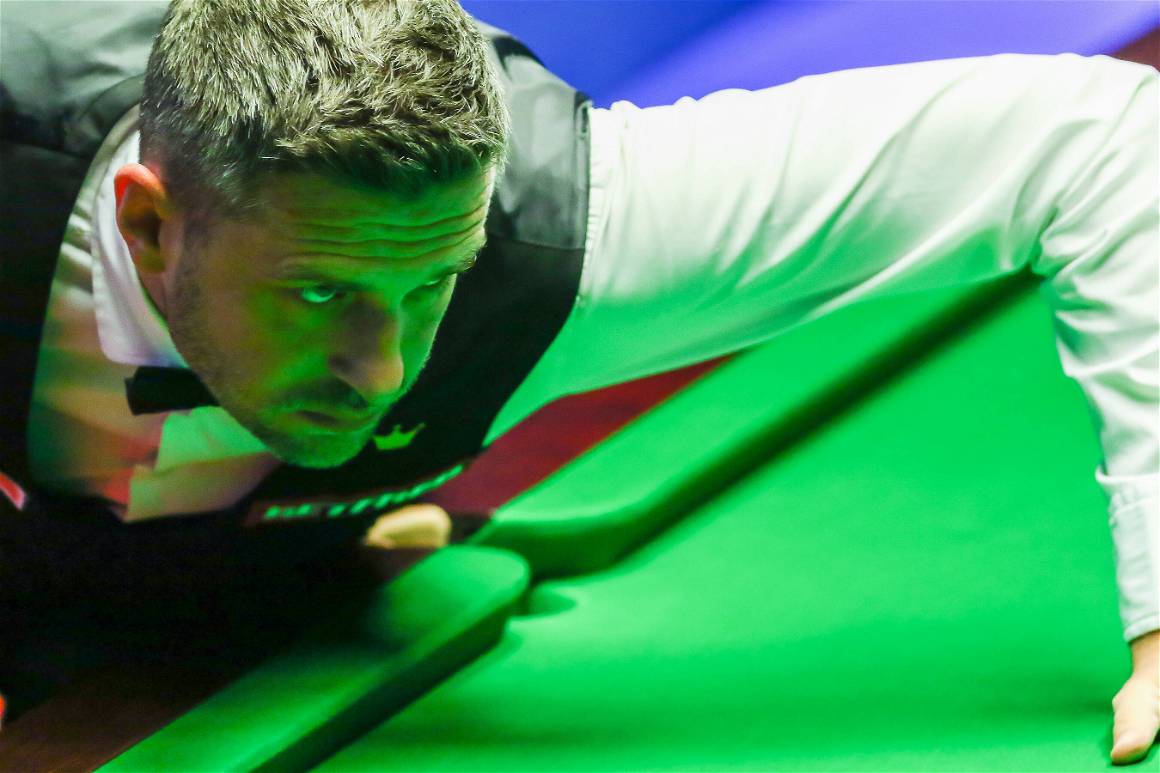
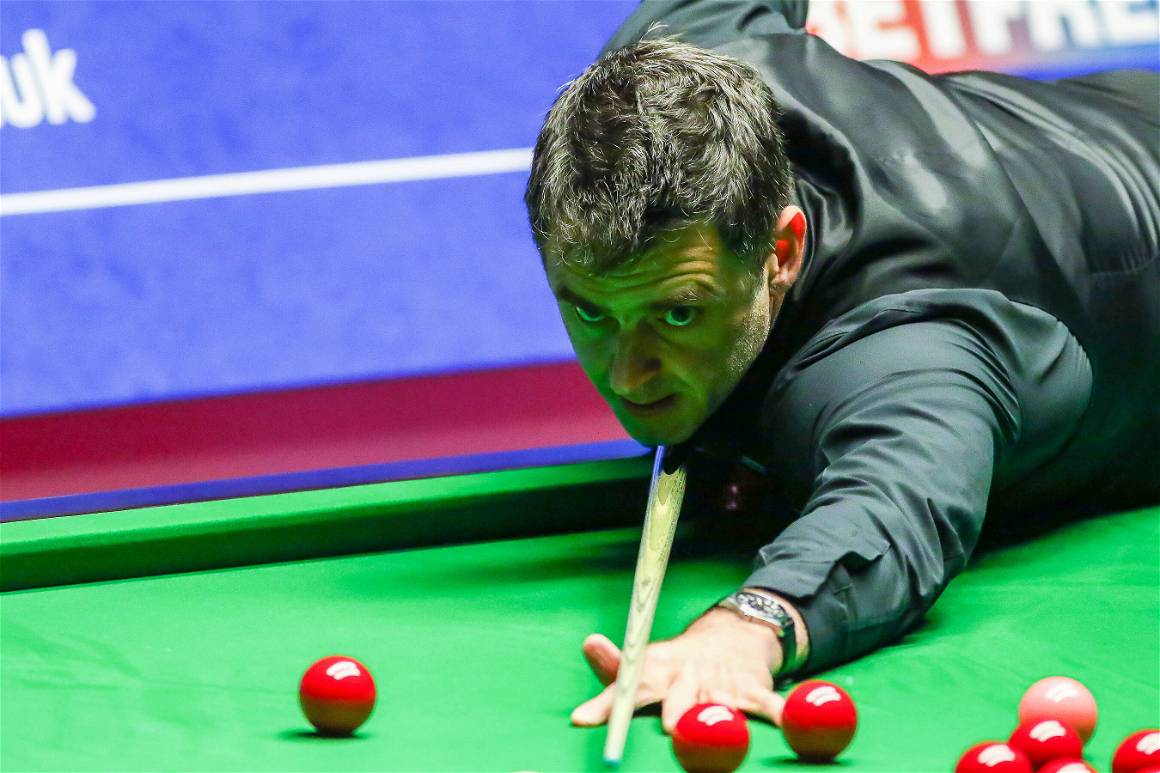
Snooker may not be the all-consuming force it once was in the 1980s, the players now sip water rather than pints of beer and vodka chasers during matches, but there remains something gloriously calming and restorative about the springtime return of this great British sporting institution. Now, where’s my axe?


